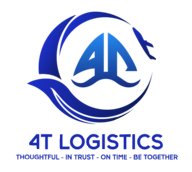2. Carry out customs procedures for exported goods
2.1. Preliminary information on customs procedures for export goods
The customs clearance steps for exporting are quite similar to when you import goods. Specifically, to carry out customs procedures when exporting goods, your business needs to follow the following steps.
2.2. Steps
Step 1: Declare export information (EDA)
Customs declarants declare export information using EDA operations before registering export declarations.
Once all criteria have been declared on the EDA screen (109 criteria), the customs declarant sends it to the VNACCS system, the system will automatically issue a number and automatically output criteria related to tax rates, names, etc. corresponding to the entered codes (for example: the name of the importing country corresponds to the country code, the name of the exporting unit corresponds to the business code...), automatically calculates criteria related to value and tax. …
After that, the system will respond to the customs declarant at the declaration registration screen - EDC.
When the system issues a number, the EDA export information declaration is saved on the VNACCS system.
Step 2: Register export declaration (EDC)
When receiving the declaration registration screen (EDC) responded by the system, the customs declarant checks the declared information and information automatically exported and calculated by the system.
If the customs declarant confirms that the information is correct, it will be sent to the system to register the declaration.
In case after inspection, the customs declarant discovers that the declared information is incorrect and needs to be amended, he must use the EDB service to call back the export information declaration (EDA) screen to correct the information. necessary and perform the work as instructed above.
Step 3: Check the conditions for registering the declaration
Before allowing declaration registration, the system will automatically check the List of businesses that are not eligible to register declarations (enterprises with overdue debts exceeding 90 days, enterprises that temporarily suspend operations, dissolve, or go bankrupt). product...).
If the enterprise belongs to the above list, it will not be allowed to register the declaration and the system will respond to the customs declarant.
Step 4: Streamlining, inspection, and customs clearance:
Once the declaration has been registered, the system automatically divides the stream, including 3 streams: green, yellow, and red
For green channel declarations
In case the tax amount payable is 0:
The system automatically grants customs clearance (within an estimated time of 03 seconds) and issues to the declarant "Decision to clear goods".
In case the tax amount payable is different from 0:
+ In case you have declared and paid tax using a limit or a guarantee (general or separate): The system automatically checks the declared criteria related to the limit or guarantee, if the amount of the limit or guarantee is greater than or equal to the tax amount payable.
After that, the system will issue to the declarant "a document recording the tax receivable" and "Decision on customs clearance of goods". If the limit or guarantee amount is less than the tax payable, the system will report an error.
+ In case of immediate tax declaration (transfer, cash payment at the customs office...): The system issues to the declarant a "voucher recording the tax receivable amount.
When the customs declarant has paid taxes, fees, and charges and the VNACCS system has received information about the payment of taxes, fees, and charges, the system issues "Decision to clear goods".
At the end of the day, the system gathers all green channel declarations and transfers them to VCIS.
For yellow and red channel declarations:
The system transfers online yellow and red stream declaration data from VNACCS to Vcis.
At this time, the customs authority will check and process the declaration on the screen of the VCIS system. After that, customs will use CKO or CEE operations to continue processing and notify options to declarants.
For customs declarants, after the processing stage of the customs authorities, they will:
+ Receive system feedback on results of channeling, location, form, and level of physical inspection of goods;
+ Submit paper documents to the customs authority to check the details of the documents; prepare conditions for physical inspection of goods;
+ Fulfill all obligations regarding taxes, fees, and charges (if any).
Step 5: Declare modifications and additions in customs clearance:
The declaration of amendments and supplements during customs clearance is carried out from the time the declaration is registered until before the goods are cleared.
To make additional declarations during customs clearance, customs declarants use the EDD service to recall export declaration information (EDA) in case the declaration is amended or supplemented for the first time, or the export declaration information has been amendment (EDA01) in case of declaration of amendments and supplements from the 2nd time onwards.
So it can be seen that, whether businesses carry out customs procedures for export or import activities, they still need to firmly grasp customs regulations.
If you have any questions or want your business's profile to be approved quickly; To limit the risk of deficiencies, contact 4T Logistics today.
Additionally, you can also find out right away service entrusted import and export 4T's goods and use for your business. With more than 10 years of experience in the field of logistics, declaration, and customs clearance of goods, 4T Logistics's implementation team will help your business carry out customs clearance documents in the simplest and fastest way.
4T Logistics - Professional, reputable international shipping
Hotline: 0901 80 19 95
Headquarters: Landmark 4, OT04, VinHomes Central Park, 720A Dien Bien Phu.
Email: info@4tlogs.com
Website: http://4tlogs.com/





